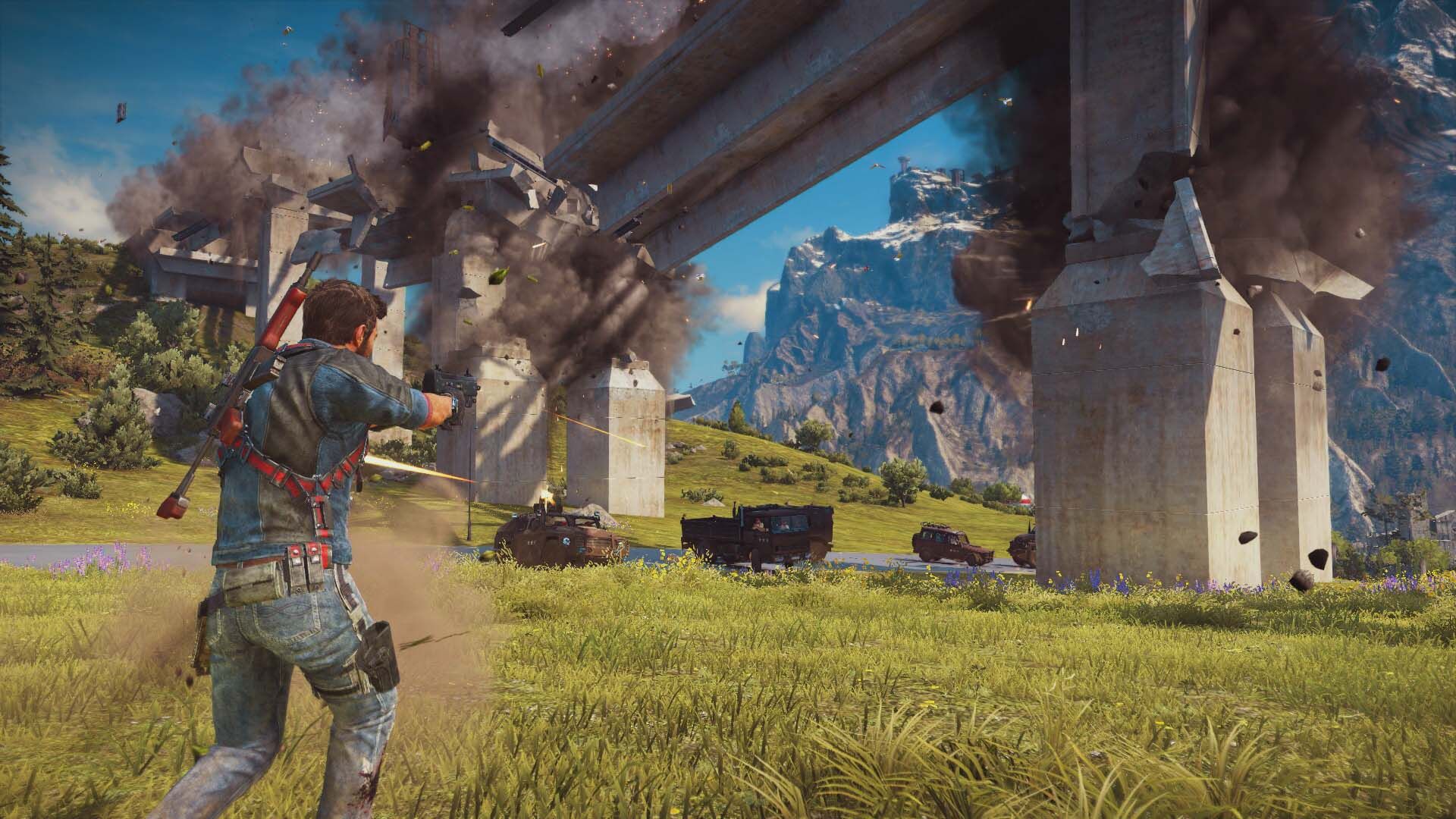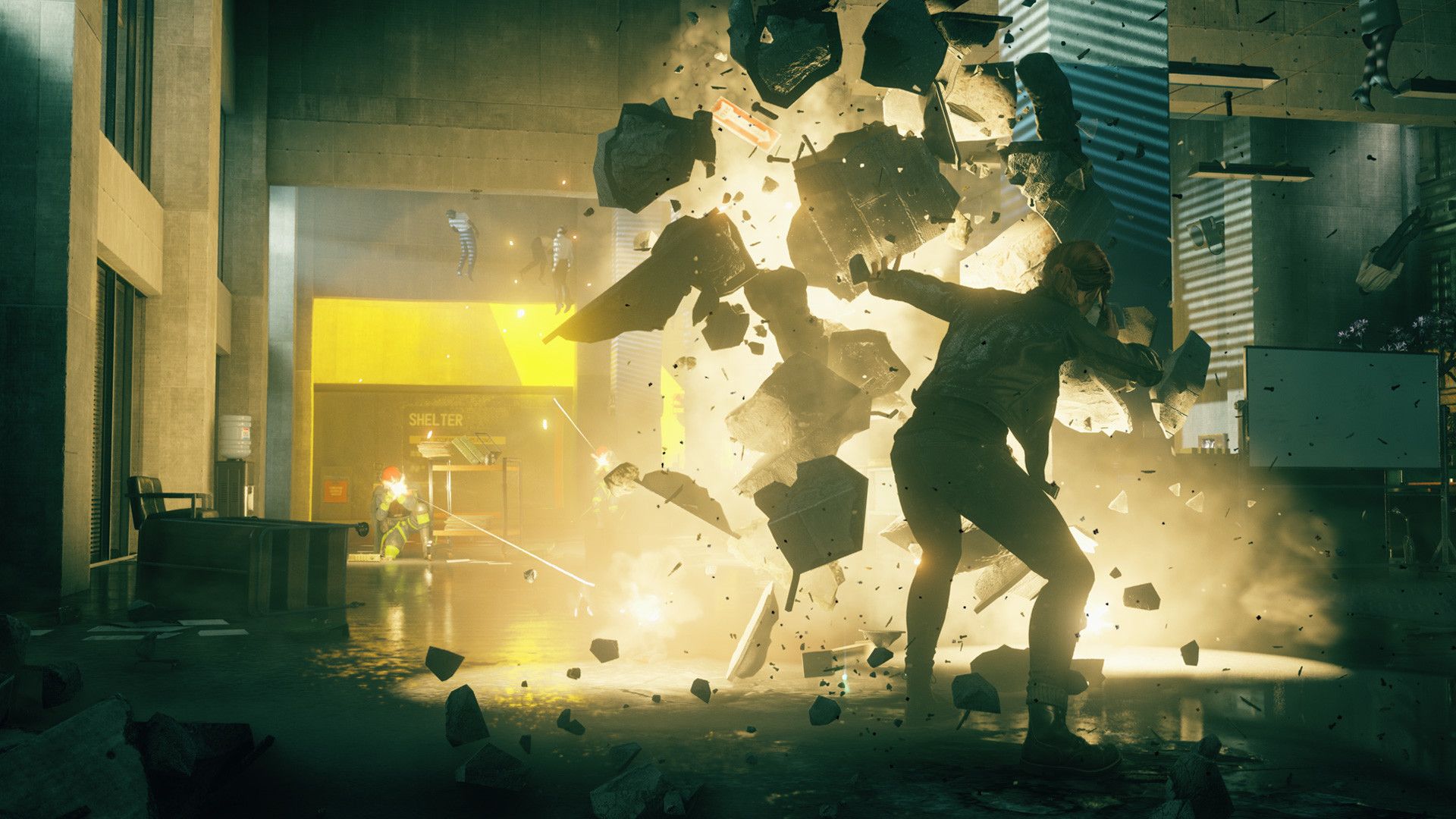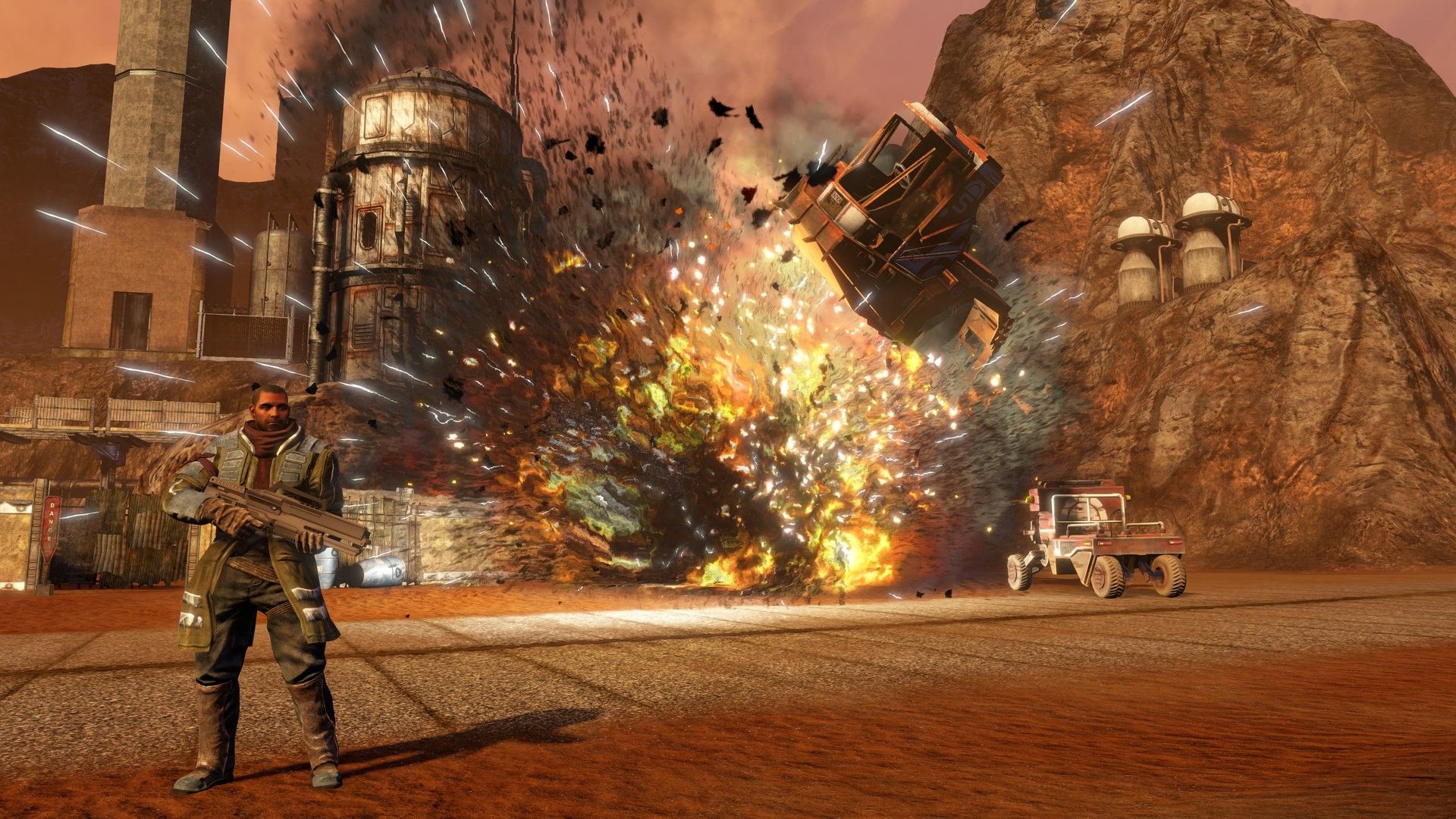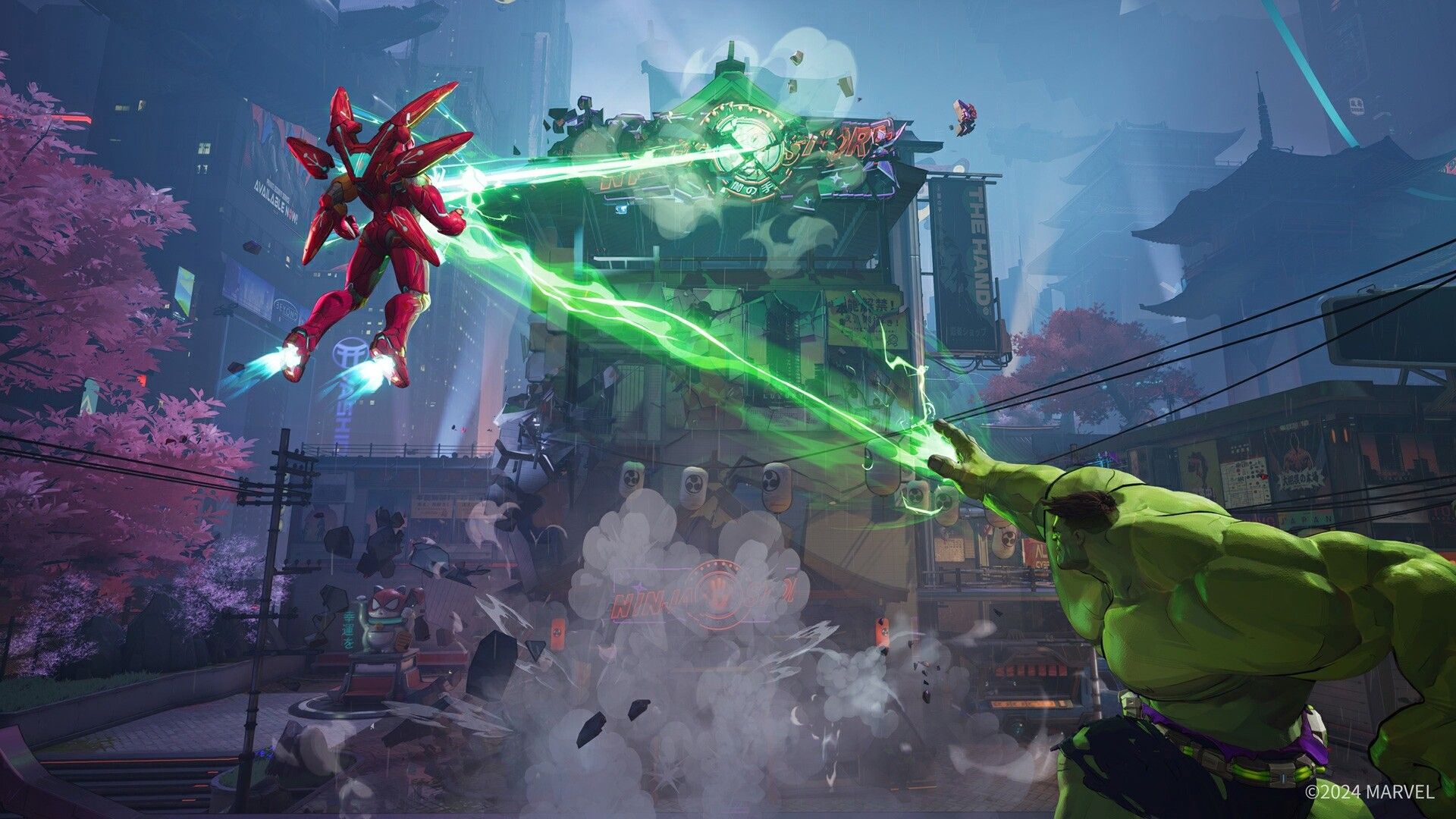Summary
- Destructible environments increase immersion and turn up the fun factor by enabling more dynamic and chaotic interaction with the game world.
- Notable franchises like
Red Faction
,
Far Cry
, and
Battlefield
focused on destructible environments, but the trend died down in the 2010s. - Destructible environments are making a comeback in multiplayer games like
THE FINALS
and
Marvel Rivals
.
Destructible environments in games are nothing new, though their popularity has fluctuated over the years. Despite never becoming fully mainstream, they’re finally making a comeback and transforming online multiplayer.
The Joy of Blowing Everything Up
Destructible environments aren’t just a visual gimmick to make games feel more realistic; they create a deep layer of immersion that makes the gameplay that much more engaging. It’s best exemplified in games that turn destructible environments into a core feature, to the point where players return simply for the thrill of blowing everything up. The Just Cause franchise comes to mind.
Many of us play games to wind down after a stressful day and have fun, and few things are as enjoyable as pretending you’re in an action movie. I’ve played three Just Cause games, yet I haven’t finished the main story in any of them because creating big explosions was simply more fun.
My favorite feature in these games is the grappling hook, which in the later games allows you to tether vehicles and parts of buildings together to create an explosive chain reaction. You could use it to do ridiculous things like tether objects such as explosives to a helicopter and then fly into buildings, jumping out at the last second.
Even if you have never played Just Cause, there’s a good chance you did something similar in a different game. Maybe you went into creative mode in Minecraft and blew up half the map with TNT. Or perhaps you drove a tank through a crowded street in Grand Theft Auto. Whatever the game and type of destruction, you can’t deny that it’s fun.
At the very least, you expect some level of destructibility in modern games. It would break immersion if a game gave you a gun or explosive, only for the environment to not react to your actions. For instance, you can shoot up vending machines and throw objects around in Control, wreck cars and take down utility poles in most modern racing games, and shatter glass in just about any modern title.
The Evolution of Destructible Environments
Let’s shift our focus back to destructible environments as a core gameplay feature and take a look at a few notable examples in recent history. One of the earliest examples of well-executed environmental destruction comes from Red Faction. Thanks to the Geo-Mod engine, the game allowed players to blow up and destroy large parts of the environment, adding significant replay value.
For instance, you could use a rocket launcher to dig long tunnels through walls or the ground. As it turned out, many players found this aspect more enjoyable than actually progressing through the campaign. It was undeniably revolutionary for its time. The destructible environments only got better in the sequels, peaking in Red Faction: Guerrilla.
Other developers caught notice and started implementing destructible environments in their games as well. Some were just as or even more impressive, though often on a smaller scale.
For instance, Crysis did a phenomenal job at real-time physics by letting players interact with the environment and take down certain buildings, while the Far Cry franchise featured some impressive fire spreading mechanics (particularly the second game).
The Incredible Hulk let players smash down entire buildings, though the destruction animations weren’t exactly high-tech. Another key milestone came with Minecraft, a sandbox game that entirely revolves around the player interacting with and shaping the landscape.
The Battlefield franchise is another stellar example of a mostly multiplayer shooter that emphasizes destructible environments. True to its name, the destruction in Battlefield plays an important role in every single match.
A major leap forward came with Battlefield: Bad Company and the introduction of the Frostbite engine. However, the most impressive destructible environments across the franchise are the “levolutions” from Battlefield 4, which could drastically change the map. One of the most infamous examples is Flood Zone, where players could destroy a levee to flood the entire map.
Despite destructible environments being so undeniably cool, their prevalence seems to have dropped off since the early 2010s. After that, there were fewer new games introducing more advanced destructible environments. I suspect they became too expensive and complex to develop and innovate beyond what these games had already done. The focus instead shifted to open worlds filled with more meaningful content.
The franchises that were known for their destructible environments continued implementing them in newer games, but there haven’t been any major developments. For example, I’ve played every Battlefield game since Battlefield 4, and I haven’t really noticed much of a difference. If anything, the newer games didn’t have levolutions, likely because they were expensive to implement and caused massive FPS drops.
Destructible Environments Are Making a Comeback
It’s been more than a decade since destructible environments were in vogue. In fact, you could argue that only a few popular multiplayer titles, like Tom Clancy’s Rainbow Six Siege, Fortnite, and the Battlefield franchise, have kept the feature on life support.
The good news is that destructible environments are finally making a comeback, and this time, it’s in competitive multiplayer games. THE FINALS made a huge splash when it launched in December 2023. It was developed by ex-Battlefield developers, so it comes as no surprise that the game features advanced, large-scale destruction mechanics.
It’s unlike anything we’ve seen before, at least in multiplayer. You can take down entire buildings with a few strategically placed explosives, which is astounding to watch.
Since it’s all multiplayer, players must strategize their destruction if they want to cash out and win. You might get away with ignoring the mechanic in casual matches and lower leagues. In Gold and above, the mechanic separates the good from the great players, depending on how the destructible environment is used to gain an advantage.
The trend continues a year later with the release of Marvel Rivals, a free-to-play third-person hero shooter. It takes heavy inspiration from Overwatch 2 but adds its own twist with Marvel characters and new gameplay mechanics; destructible environments are one of them.
Players can break walls, glass, bridges, and other key parts of the map. There’s even a dedicated feature called Chrono Vision (B on PC, right D-pad on consoles), which highlights the destructible sections.
While the destruction isn’t as fleshed out as in THE FINALS, the environments in Marvel Rivals are arguably more detailed. The Season 1 patch added Recursive destruction, allowing players to restore objects, which opens up new strategic possibilities. It’s highly likely that future heroes will have abilities that interact with the environment in unique and innovative ways.
The constantly shifting maps add excitement and raise the stakes in each match. For instance, if the enemy Moon Knight keeps camping on a ledge and poking your healers, you can take down the entire structure to force him down, turning him into an easy target for your team.
The Future of Destructible Environments Is Bright
Destructible environments are one of the key features that kept me going back to Battlefield V, so I was thrilled to see some new high-profile releases like THE FINALS and Marvel Rivals bring the mechanic back into the limelight.
Both CPUs and GPUs have advanced significantly over the years, which could open up the opportunity for more realistic physics simulation, leading to even more complex destruction. I also hope that this mechanic will spread into other genres beyond action games and shooters, such as racing games, RPGs, and open-world titles like GTA VI. Almost every game could benefit from a little bit of destruction!








